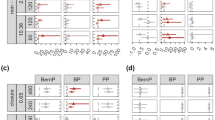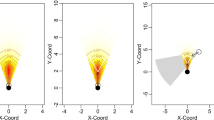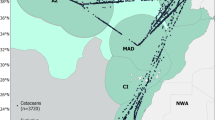Abstract
IN any census of an animal population a number of individuals may remain undiscovered and this makes the estimation of population size difficult. Various statistical procedures may be used to overcome this problem1,2, but these methods usually require the identification of the individuals: that is, that animals revealed during one count should be recognized during other counts. To our knowledge there is published only one method3 for estimation of the efficiency of a survey and the size of populations containing unidentified individuals, but the validity of this method has been questioned4.
This is a preview of subscription content, access via your institution
Access options
Subscribe to this journal
Receive 51 print issues and online access
$199.00 per year
only $3.90 per issue
Buy this article
- Purchase on Springer Link
- Instant access to full article PDF
Prices may be subject to local taxes which are calculated during checkout
Similar content being viewed by others
References
The Wildlife Society, second ed. (edit. by Mosby, H. S.) (1963).
Seierstad, S., Seierstad, A., and Mysterud, I., Nature, 206, 22 (1965).
Palmgren, P., Acta Zool. Fennica, 7, 219 (1930).
Enemar, A., Vår Fågelv., suppl. 2, 29 (1959).
Author information
Authors and Affiliations
Rights and permissions
About this article
Cite this article
SEIERSTAD, S., SEIERSTAD, A. & MYSTERUD, I. Estimation of Survey Efficiency for Animal Populations with Unidentifiable Individuals. Nature 213, 524–525 (1967). https://doi.org/10.1038/213524a0
Issue Date:
DOI: https://doi.org/10.1038/213524a0
Comments
By submitting a comment you agree to abide by our Terms and Community Guidelines. If you find something abusive or that does not comply with our terms or guidelines please flag it as inappropriate.



